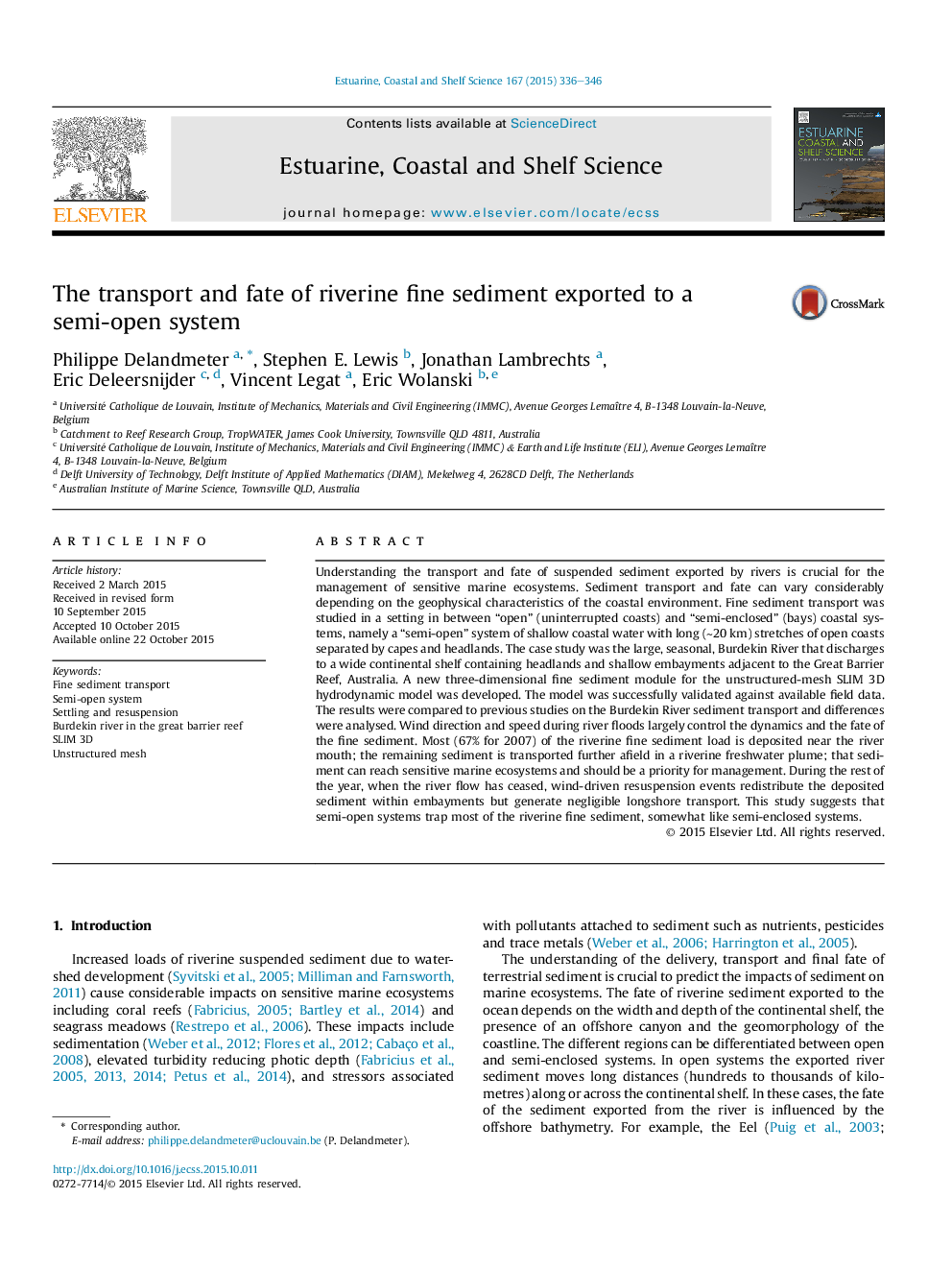| کد مقاله | کد نشریه | سال انتشار | مقاله انگلیسی | نسخه تمام متن |
|---|---|---|---|---|
| 4539335 | 1326591 | 2015 | 11 صفحه PDF | دانلود رایگان |
• Sediment transport in “semi-open” systems is much different than in open systems.
• Semi-open systems trap most of the riverine sediment.
• Wind-driven resuspension events redistribute the sediment within an embayment.
• Most of the sediment export out of the river mouth bay occurs during flood events.
Understanding the transport and fate of suspended sediment exported by rivers is crucial for the management of sensitive marine ecosystems. Sediment transport and fate can vary considerably depending on the geophysical characteristics of the coastal environment. Fine sediment transport was studied in a setting in between “open” (uninterrupted coasts) and “semi-enclosed” (bays) coastal systems, namely a “semi-open” system of shallow coastal water with long (∼20 km) stretches of open coasts separated by capes and headlands. The case study was the large, seasonal, Burdekin River that discharges to a wide continental shelf containing headlands and shallow embayments adjacent to the Great Barrier Reef, Australia. A new three-dimensional fine sediment module for the unstructured-mesh SLIM 3D hydrodynamic model was developed. The model was successfully validated against available field data. The results were compared to previous studies on the Burdekin River sediment transport and differences were analysed. Wind direction and speed during river floods largely control the dynamics and the fate of the fine sediment. Most (67% for 2007) of the riverine fine sediment load is deposited near the river mouth; the remaining sediment is transported further afield in a riverine freshwater plume; that sediment can reach sensitive marine ecosystems and should be a priority for management. During the rest of the year, when the river flow has ceased, wind-driven resuspension events redistribute the deposited sediment within embayments but generate negligible longshore transport. This study suggests that semi-open systems trap most of the riverine fine sediment, somewhat like semi-enclosed systems.
Figure optionsDownload high-quality image (201 K)Download as PowerPoint slide
Journal: Estuarine, Coastal and Shelf Science - Volume 167, Part B, 20 December 2015, Pages 336–346
